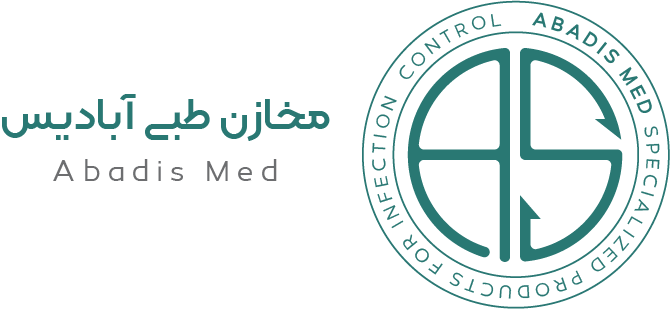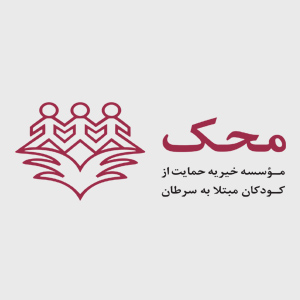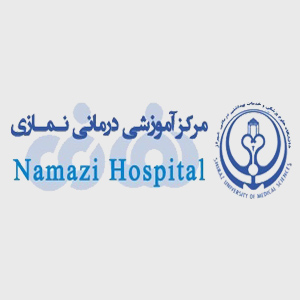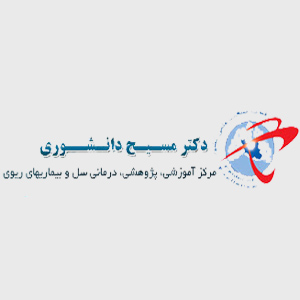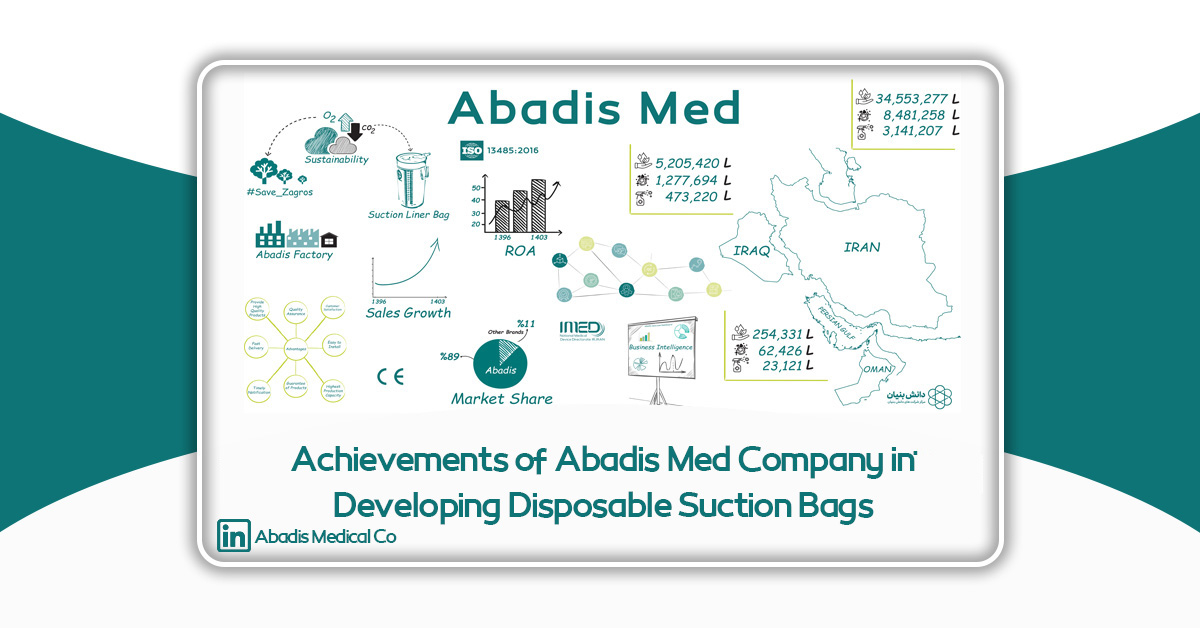Achievements of Abadis Med Company in Developing Disposable Suction Bags: A Breakthrough in Hospital Management and Environmental Protection
Abstract
The disposable suction bag represents an innovative technology in the management of infectious hospital fluids, playing a crucial role in infection control, cost reduction, and environmental protection. Traditional fluid disposal methods, such as reusable suction canisters, have been associated with multiple issues—including excessive water consumption, the need for disinfectants, risk of contamination, and high operational costs. In this regard, Abadis Med Company has introduced a transformative solution through the development and production of disposable suction bags.
This paper examines the positive impact of this technology from multiple perspectives. Results indicate that the use of disposable suction bags has significantly reduced hospital water consumption, prevented the discharge of infectious wastewater into the environment, and improved the productivity of healthcare staff. Moreover, by eliminating the need to wash contaminated suction canisters, this innovation has enhanced occupational safety and reduced costs associated with disinfectants and manpower.
Statistical data show that in recent years, Abadis Med Company has saved millions of liters of water in hospitals across Iran, Iraq, and Oman through the adoption of disposable suction systems. This innovation has not only optimized hospital operations but also contributed to sustainable development and public health by preventing the spread of infectious agents into the environment.
Given these achievements, the disposable suction bag is recommended as an effective and standardized solution for hospital infection control and water conservation. By focusing on innovation and quality, Abadis Meds Company has secured a significant market share and plays a key role in advancing efficient and eco-friendly medical waste management systems.
Introduction
Hospitals and healthcare centers generate large volumes of infectious fluids daily. Proper management of these fluids is essential from sanitary, economic, and environmental perspectives. Traditionally, suctioned fluids were collected in reusable canisters that required emptying, washing, and disinfection—procedures that consumed significant amounts of water and disinfectants while increasing the risk of infection transmission among healthcare workers and patients.
The introduction of disposable suction bags has revolutionized hospital waste management. As the leading manufacturer of such systems in Iran, Abadis Med Company has brought substantial improvements in hospital efficiency, infection prevention, and environmental sustainability.
Water Conservation and Environmental Protection Achievements
Abadis’ Contributions to Water Efficiency
By replacing reusable canisters with disposable suction bags, the need for washing and disinfection has been eliminated—directly reducing water usage.
As of December 20, 2024 (30 Azar 1403), Abadis has achieved the following milestones:
In Iran 🇮🇷
-
34,553,277 liters of water saved
-
8,481,258 liters of infectious wastewater prevented from entering the environment
In Iraq 🇮🇶
-
5,205,420 liters of water saved
-
1,277,694 liters of infectious wastewater prevented from entering the environment
In Oman 🇴🇲
-
254,331 liters of water saved
-
62,426 liters of infectious wastewater prevented from entering the environment
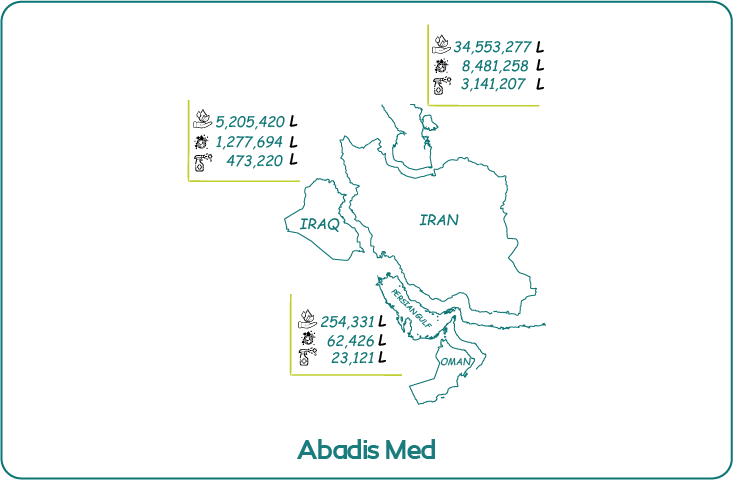
Environmental Impact Reduction and Sustainable Initiatives of Abadis Med Company
Reduction of Environmental Pollution
Hospital infectious fluids contain bacteria, viruses, and other pathogens that can contaminate surface and groundwater, leading to the spread of infectious diseases. By using Abadis disposable suction bags, these fluids are safely contained and disposed of without contact with the environment, thereby preventing contamination of urban water systems.
Reduced Use of Disinfectants and Related Costs
High Cost of Traditional Disinfection Methods
Disinfectants such as sodium hypochlorite and glutaraldehyde are widely used for cleaning and sterilizing reusable suction canisters. These chemicals not only impose high financial costs but also have adverse environmental impacts and occupational health risks for hospital staff.
Decreased Disinfectant Consumption through Abadis Suction Bags
-
3,141,207 liters reduction in disinfectant use in Iran 🇮🇷
-
473,220 liters reduction in disinfectant use in Iraq 🇮🇶
-
23,121 liters reduction in disinfectant use in Oman 🇴🇲
The reduction in chemical disinfectant usage not only decreases hospital operating costs but also minimizes negative effects on the environment.
Decreased Risk of Hospital-Acquired Infections and Enhanced Staff Safety
-
Reduced direct contact between staff and infectious fluids
-
Safe, leak-proof packaging and disposal of biological waste
-
Lower transmission risk of hospital-acquired infections
These features ensure the safety of both patients and healthcare personnel while reducing the cost burden of treating hospital-related infections.
Improved Hospital Efficiency and Optimization of Medical Processes
Operational Challenges of Traditional Methods
-
Time-consuming cleaning and sterilization procedures
-
Reduced staff productivity
-
Increased operational costs
Advantages of Abadis Disposable Suction Systems
-
30% increase in hospital staff productivity
-
Lower labor costs
-
Enhanced focus on patient care and treatment quality
Corporate Social Responsibility and Environmental Protection: The Zagros Rescue Project
Beyond medical innovation, Abadis Med Company actively fulfills its corporate social responsibility (CSR) through initiatives aimed at environmental protection. One of its most significant sustainability programs is the Zagros Rescue Project, designed to preserve natural resources and address ecological challenges in the Zagros mountain region.
Objectives of the Zagros Rescue Project
The Zagros region, one of Iran’s most vital ecosystems, faces major environmental threats, including deforestation, climate change, drought, and frequent wildfires. These issues endanger biodiversity and the health of the region.
The Zagros Rescue Project aims to restore vegetation cover, protect natural habitats, and combat climate change—particularly in mountainous areas.
Oak Tree Plantation and Its Significance
In the first phase of the project, Abadis Med Company planted 400 oak saplings across various parts of the Zagros Mountains.
Oak trees, known for their resilience to drought and climate variability, play a critical role in:
-
Preventing soil erosion
-
Preserving groundwater resources
-
Producing oxygen and maintaining ecological balance
Planting oak trees not only enhances forest density but also improves soil quality and provides a sustainable habitat for regional flora and fauna.
Future Plans of the Zagros Rescue Project
Encouraged by the success of the first phase, Abadis plans to expand the number of planted oak trees to 4,000 in the coming years.
This long-term initiative aims to expand green spaces and improve environmental quality throughout the Zagros region, as part of Abadis’ broader commitment to sustainability and climate action.
The project also seeks collaboration with government agencies, NGOs, and local communities to sustain ecological restoration and vegetation growth. Moreover, Abadis intends to support similar projects across other regions of Iran to promote nature conservation and combat environmental crises.
Promoting Environmental Awareness in Healthcare Institutions
The Zagros Rescue Project not only supports local ecosystems but also fosters environmental awareness in hospitals and healthcare centers nationwide.
Through its initiatives, Abadis Medical Tanks Company encourages medical institutions to adopt eco-friendly and sustainable technologies, reinforcing the culture of environmental responsibility across the healthcare sector.
Hospitals, as influential societal institutions, are thereby inspired to take a more active role in protecting natural resources and reducing ecological impact.
Contribution to Community Well-Being
By implementing environmental projects such as the Zagros Rescue Project, Abadis contributes directly to improving the quality of life within communities.
These initiatives:
-
Strengthen forests and biodiversity
-
Reduce air pollution and global warming
-
Improve groundwater quality and soil health
-
Create local employment opportunities in agriculture and environmental management
-
Provide healthier and greener living environments
The Zagros Rescue Project stands as one of the most remarkable CSR achievements of Abadis Med Company, demonstrating its long-term commitment to environmental preservation and sustainable development.
Through initiatives such as oak tree planting, the company actively contributes to maintaining ecological balance and combating climate change.
Abadis not only fulfills its environmental responsibilities but also promotes sustainability awareness—especially among healthcare institutions—serving as a model of responsible and eco-conscious corporate behavior.
Such initiatives represent meaningful progress toward environmental sustainability and a greener future.

Conclusion
Through the development of Abadis disposable suction bags, Abadis Med Company has successfully achieved the following:
-
Reduced water consumption in healthcare facilities
-
Prevented the discharge of infectious wastewater into the environment
-
Lowered hospital operational and sanitation costs
-
Increased the productivity of healthcare staff
-
Enhanced hospital safety and infection control
This innovative technology represents a major step toward sustainable development, infection prevention, and cost reduction in healthcare systems.
References
-
World Health Organization (WHO):
-
World Health Organization. (2017). Safe management of wastes from health-care activities (2nd ed.). Geneva: WHO Press.
-
-
Centers for Disease Control and Prevention (CDC):
-
Centers for Disease Control and Prevention (CDC). (2021). Guidelines for Environmental Infection Control in Health-Care Facilities. Atlanta, GA.
-
-
Environmental Protection Agency (EPA):
-
Environmental Protection Agency (EPA). (2020). Medical Waste Management and Environmental Impacts. Washington, DC.
-
-
Scientific Articles and Professional Guidelines:
-
Chartier, Y., Emmanuel, J., Pieper, U., Prüss, A., Rushbrook, P., Stringer, R., & Townend, W. (2014). Health-care waste management. WHO.
-
Rutala, W. A., Weber, D. J., & the Healthcare Infection Control Practices Advisory Committee (HICPAC). (2019). Guideline for Disinfection and Sterilization in Healthcare Facilities, 2019. CDC.
-
Diaz, L. F., Savage, G. M., & Eggerth, L. L. (2005). Alternatives for the treatment and disposal of healthcare wastes in developing countries. Waste Management, 25(6), 626–637.
-
-
International Environmental Reports:
-
United Nations Environment Programme (UNEP). (2019). Environmental Impact of Medical Waste Disposal on Ecosystems. Nairobi, Kenya.
-
European Environment Agency (EEA). (2022). Hospital Wastewater Management and Its Impact on Urban Water Systems.
-
-
National Reports (Iran):
-
Ministry of Health and Medical Education of Iran. (2023). Report on Hospital Waste Management Status in Iran.
-
Department of Environment of Iran. (2022). Impact of Hospital Wastewater on Groundwater Quality.
-
